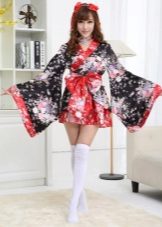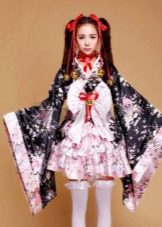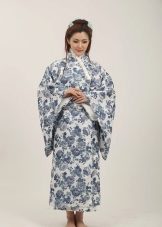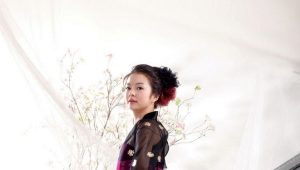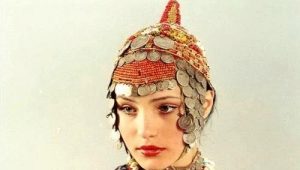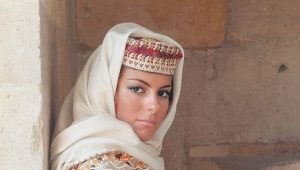National Japanese costume
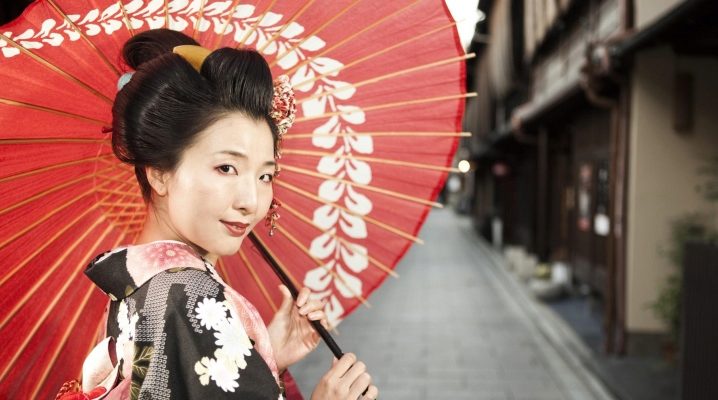
The national Japanese costume is distinguished by an indescribable, incomparable color, subtle elegance of style, bright individuality of shapes and colors. Since the opening of the Land of the Rising Sun, Japanese clothing motifs have invariably excited the minds and hearts of eminent designers and notorious fashionistas.
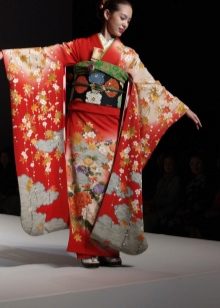
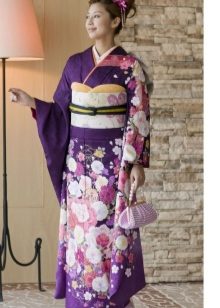
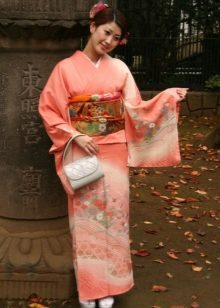
A bit of history
The first mention of the Japanese costume is found in ancient Chinese manuscripts. With the advent of Buddhism to Japan, Chinese influence also filtered into many areas of life, including clothing. In the 7th century, the Japanese costume is finally formed in its finished form, close to what we are used to seeing at the present time. At the same time, the classic kimono model appeared - in the form of a swinging robe with long sleeves.
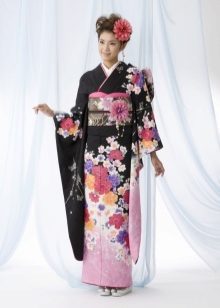
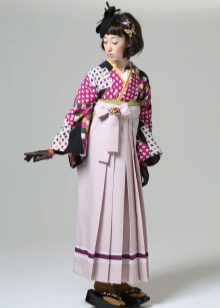
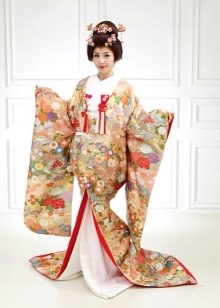
It is worth noting that the word "kimono" refers not only to this type of clothing. The hieroglyphs that make up the “kimono” mean in combination “what they wear” or “the thing that they put on themselves”, more simply - clothes as a look. Both meanings of the word are used in modern language. To highlight typical Japanese clothing, the term "wafuku" is used, in contrast to which they use "yofuku" - Western-style clothing.
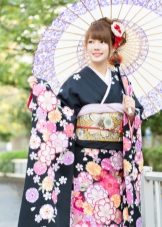
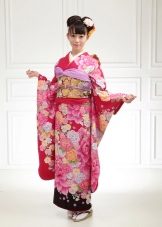
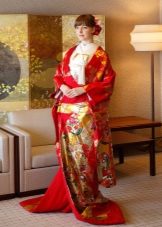
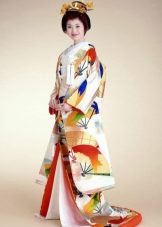
Features of Japanese national clothes
Colors and shades differ between men's and women's clothing.The men's suit is focused, first of all, on practicality and non-staining, so the colors were classically chosen in dark or neutral colors. Prints are used mainly simple geometric, less often floral and animalistic. The belt, shoes and accessories are also made in discreet soothing colors.
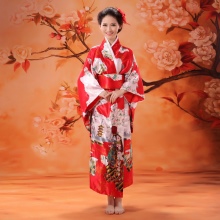
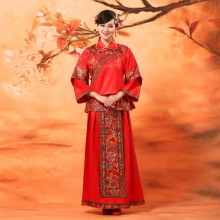
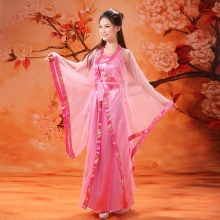
Women's kimono is designed to demonstrate the beauty and grace of its owner, to attract and please the eye.
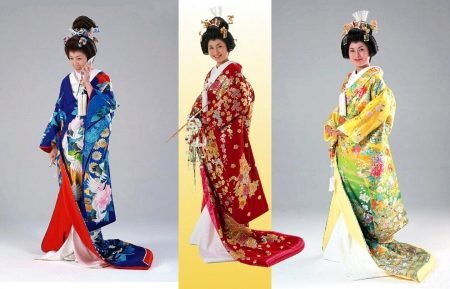
Colors and shades are chosen bright, saturated for festive wear and calmer for everyday wear. The main color accent is on the obi belt. Fresh pink, light green, lilac, purple, blue shades are often used. The use of floral and floral prints is widespread, seasonal motifs are popular - momiji maple leaves in autumn, sakura, peach or plum flowers in spring, thin matzo pine needles in winter.
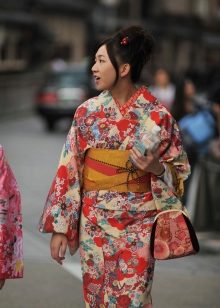
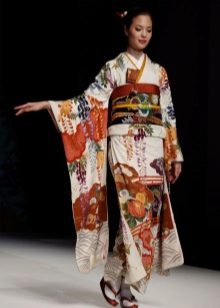
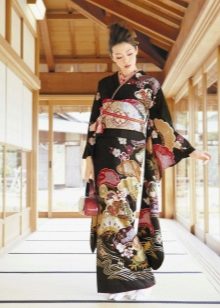
The fabrics and cut of a real Japanese kimono are a secret passed down from master to successor. Since ancient times, fabrics have been made and painted by hand, and details are also sewn and ripped by hand. But this applies only to expensive classic kimonos. The modern industry produces a large assortment of factory-made yukata, hakama and haori with typical prints.
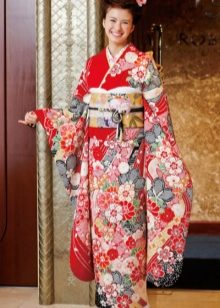
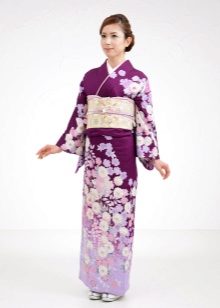
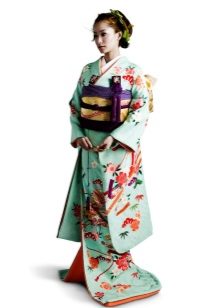
Varieties
Varieties of the Japanese national costume provide excellent canons of clothing for people of different sexes, social status and social status.
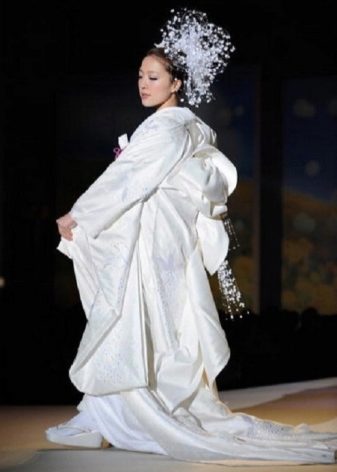
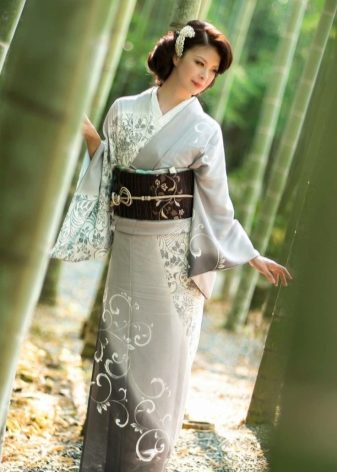
Women's traditional costume consists of several layers of clothing, assembled in such a way that in certain places, as if by chance, the lower clothing could be seen. The underwear includes a skirt of a special style "futano" or "koshimaki", as well as an undershirt "hadajuban".Outerwear is kimono or, in some cases, haori, which is distinguished by the presence of an unsewn armhole in the armpit area, into which the undergarment must necessarily be visible. Of course, it is very important that the upper kimono and the corresponding lower kimono are successfully harmonized in color.
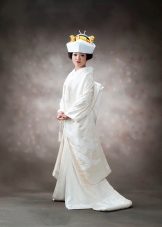
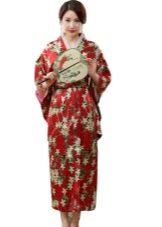
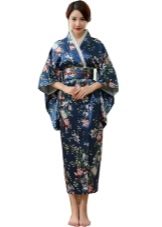

The main element of women's traditional attire is a wide long obi belt.
The standard length of the obi reaches four to five meters. The surplus of the belt is necessary in order to tie bows, incredible in their complexity and beauty. In ancient times, the method of tying a bow, the color and ornament of the obi spoke of the social status and marital status of a woman. Now the bow on the obi carries a purely utilitarian and aesthetic load.

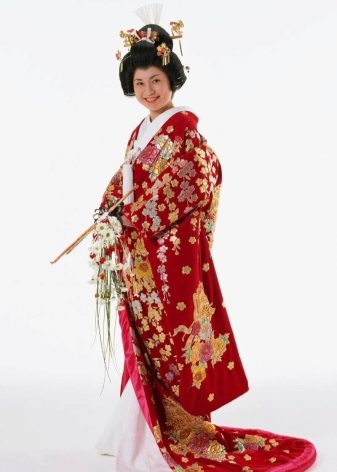
A men's suit is simpler because it includes fewer wardrobe details and involves fewer conventions. Koshimaki and juban, a narrow, shortened robe with a straight cut, as well as a loincloth made of a piece of fundoshi fabric, are considered to be the lower clothing worn under the bottom of traditional vestments. A kimono or haori is put on top - a short jacket with a standing solid collar, characterized by wide, spacious sleeves. It is also customary to wear hakama - wide pleated pants that resemble a skirt in silhouette. Hakama was the traditional clothing of warriors and is still used as a uniform in many martial arts.
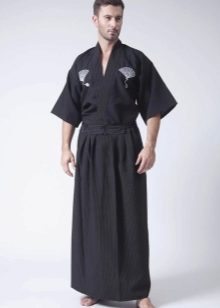
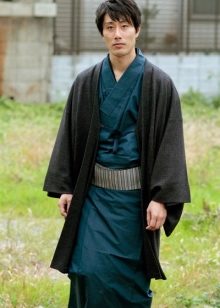

The children's costume is, in fact, a smaller and more elaborate copy of the adult variations. Children's outfits are distinguished by brighter and more picturesque colors, specific prints that bring good luck, with flowers and painted carps - koi, as well as a number of accessories.
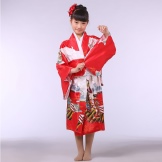
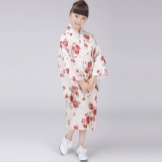
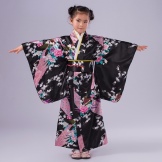
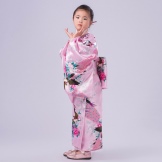
Accessories and shoes
Traditional Japanese shoes have two popular models - geta and zori. Zori are woven sizeless sandals with a flat sole. Geta are of two types. The first type of geta looks like a tall wooden stool with one or two legs, which can reach a height of about ten centimeters. The second type of geta is based on a massive wooden block with a notch at the bottom.
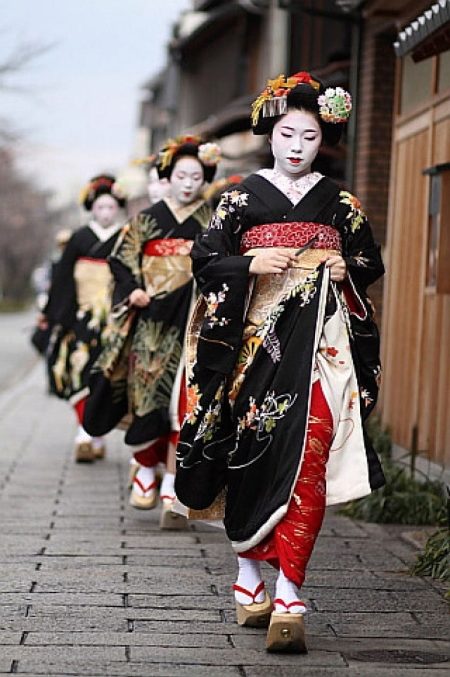
The geta is attached to the foot with two laces fastened between the big and forefinger of the foot. The specific cut of the shoes also gave rise to special tabi socks with a separated thumb. Often geta are decorated and festively painted, so some examples are real works of art.
Of the accessories, the Japanese usually use small rag bags and netsuke belt trinkets.
Women often decorate their hairstyles with special combs, sticks, and frilly hairpins.

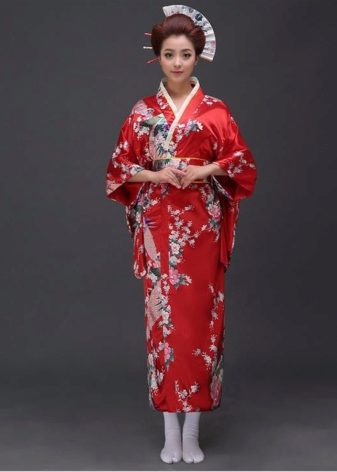
Modern models
Today, Japanese costume models follow the path of simplification. It is no secret that traditional costumes are quite uncomfortable and heavy, and they also require significant costs in storage and operation. Some varieties of kimono are simply impossible to wear on your own. Therefore, they are worn only on especially solemn occasions - for weddings, ceremonies or historical festivals.
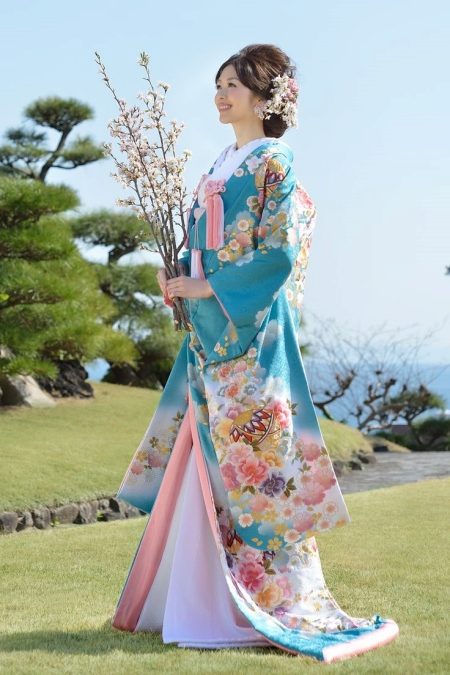
Basically, modern Japanese fashionistas and fashionistas prefer yukata - a lightweight and simpler kimono model. And if initially the yukata was a modest home attire, now it is a full-fledged element of the wardrobe. In it they go to visit, along the streets, put on for holidays and festivals.

